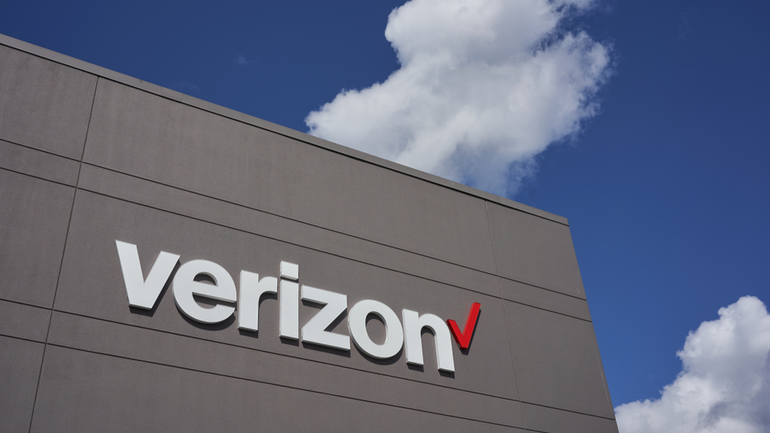Telefonica has announced their significant commitment to the metaverse, indicating that the company will use MWC22 Barcelona to demonstrate its digital transformation and technological leadership initiatives through an innovative virtual environment. Telefonica said it will utilize the metaverse to demonstrate all of its in-person demos, allowing conference attendees to digitally visit the four physical sites on the exhibition floors. The organization will provide a unique experience based on the quality of the information exhibited and the ongoing and diverse activities by combining real-time and virtual participation. Telefónica will demonstrate its expertise, capabilities and dedication to assisting businesses, governmental agencies and society as a whole in taking advantage of the tremendous opportunities that digitization and connectivity provide. The company will also show what it can do for the community, and the advantages its solutions will deliver in terms of making participants more efficient, sustainable and safe. Telefónica will exhibit…
Oracle Communications has been chosen by Vodafone UK to lead the network policy for its standalone 5G network. Vodafone will be able to make more intelligent policy decisions and swiftly test and deploy new services using Oracle’s cloud native network policy management technology as part of its 5G core. Customers will be able to get their hands on exciting new 5G options sooner, thanks to this new agreement, which includes holographic calls, lag-free 5G game streaming and film downloads up to 4X faster than 4G networks. The solution, which is comprised of Oracle’s 5G Core Policy Control Function (PCF) and Policy and Charging Rules Function (PCRF), enables the implementation of sophisticated network policies across wireless, fixed and cable networks, as well as IoT and machine-to-machine (M2M) networks. In the case of Vodafone, the solution will provide data from which Vodafone customers may select the optimal network offer…
In conjunction with key local industry experts, BAI Communications, a worldwide communications infrastructure provider, has launched the next phase of its international growth plan with its entrance into Italy. The company’s goal is to deliver neutral host connected infrastructure solutions to one of Europe’s strongest telecoms markets. BAI Italia is the company’s first European business outside of the United Kingdom and Ireland, bolstering its position as a regional leader in 5G and shared infrastructure. BAI Italia will focus on providing low latency and limitless capacity neutral host networks to ensure that Italians can remain connected in congested metropolitan areas. The group’s vast capabilities will be leveraged by the experienced leadership team to design, develop, manage and fund the critical connectivity infrastructure required to advance digital innovation. The organization will expand existing connections with mobile network operators (MNOs), businesses and municipalities to create a future-ready platform that will be…
Verizon and AT&T delay 5G rollouts After initially refusing to postpone the launch of their new 5G service which had been set for January 5, 2022, AT&T and Verizon have decided to delay the rollout by two weeks. According to airline industry representatives, a last-minute draft agreement was first negotiated with AT&T and subsequently with Verizon. Aviation officials are concerned that the new technology will interfere with flight altitude-measuring equipment. Read more at: https://tinyurl.com/2p8sbzc7 Amazon, Cisco and Lockheed Martin collaborate on a space mission Callisto, a tech demonstration payload, will be deployed onboard NASA’s Orion spacecraft during its unmanned Artemis I trip around the Moon, thanks to a collaboration between Cisco, Amazon and Lockheed Martin. The goal is to determine if voice and video communication technology can assist astronauts and increase their mission efficiency and situational awareness. The Callisto payload has bespoke hardware and software created by the three companies…
Xiaomi unveils new flagship smartphones The Chinese tech giant Xiaomi has introduced its new flagship smartphones, the Xiaomi 12 and Xiaomi 12 Pro, which will go on sale in China from December 31st. The global launch of the Xiaomi 12 is expected to follow in early 2022. According to the company’s press release, the Xiaomi 12 and Xiaomi 12 Pro are powered by the latest Snapdragon 8 Gen 1 processor, and feature industry-leading DisplayMate A+ OLED displays and powerful imaging capabilities. During the presentation, Xiaomi CEO Lei Jun indicated that the new smartphone would be a direct competitor to the iPhone 13. Read more at: https://tinyurl.com/58byr3fu Telefónica acquires Ericsson 5G equipment to replace Huawei Telefónica, Spain’s leading telecommunications group, has bought 5G network equipment from the Swedish manufacturer Ericsson to replace some Huawei gear that it has deployed in Spain. According to the local newspaper Expansion, Telefónica had initially rolled out…
Verizon and Google Cloud have launched a new collaboration initiative. The corporations will join to deliver the power of the cloud closer to mobile and connected devices operating at the edge of Verizon’s network. With this new agreement, Verizon now interoperates with all three main cloud providers: Amazon Web Services (AWS), Microsoft Azure and Google Cloud. Verizon intends to deliver Google’s computing and storage capabilities to the edge of the local network by combining Verizon 5G Edge with Google Distributed Cloud Edge. This will provide real-time corporate applications such as autonomous mobile robots, intelligent logistics and industrial automation with the bandwidth and low latency that they require. Verizon’s private On Site 5G and private 5G Edge, combined with Google Distributed Cloud Edge, are expected to enable enterprises in industries ranging from retail to manufacturing to harness the power of 5G and mobile edge computing, while also gaining operational…
Nokia inks a 5G deal with Elisa Estonia Elisa Estonia, a subsidiary of Elisa Finland, has selected Nokia for a national 5G RAN deployment, as well as the replacement of current 4G infrastructure in a five-year arrangement. On completion of Estonia’s spectrum auction in early 2022, deployment is planned to begin in the following year. Nokia will supply Elisa with equipment from its newest ReefShark System on the chip-powered AirScale equipment portfolio, which will cover the nation’s countrywide radio network. Read more at: https://tinyurl.com/y4bvm323 BT announces the creation of a Clinical Advisory Board BT has announced the formation of a Clinical Advisory Board, which will be made up of experienced healthcare experts. The aim of this initiative is to help drive the development of innovative, connected healthcare solutions that will improve results and experiences for the NHS and their patients. The professionals will contribute decades of expertise and deep knowledge…
Telefonica to offer industrial 5G services in 2022 For the first time, Telefonica will provide a range of industrial 5G services to selected partners starting in January 2022. In recent years, Telefonica has tested approximately 80 use cases across several industries, with a handful of solutions now ready for implementation. Telefonica will market three particular 5G use cases for industry through its Telefonica Tech unit: autonomously guided vehicles (ATGs), remote support solutions and drone solutions. Customers will be able to access all of these services via Telefonica’s public mobile network, as well as a virtual or dedicated private network. Read more at: https://tinyurl.com/46x6mcdj Verizon scores a $34.6M contract The US Department of Energy has awarded Verizon Public Sector two Enterprise Infrastructure Solutions (EIS) contracts for $34.6 million. Verizon will offer voice and data services to a variety of DOE sites, including the agency’s headquarters in Washington, D.C. Under the terms…
Over the past decade, there have been so many advancements that it is difficult to keep up with all the technological breakthroughs. This journey has been thrilling and every invention delivers new technology at a rapid pace. It is critical to look to the future for clues as to where technology will take the society next. And this decade is shaping up to be one of significant technological leaps, as businesses prepare for the large-scale integration of advanced technologies. Here are the top technological trends that are taking the world by storm. Blockchain A blockchain, in its most basic form, is a shared, digital record that cannot be changed once a transaction has been recorded and confirmed. In other words, blockchain technology makes it nearly impossible to falsify a transaction. When you hear the term blockchain, the first thing that usually springs to mind is cryptocurrency; however, there is more…
VMware announces RAN intelligent controller This week, VMware released several of their initiatives aimed at bolstering and solidifying the company’s telco cloud plans. The debut of the RAN intelligent controller is one of the recent announcements (RIC). The VMware RIC will be accessible in two deployment models: centralized and distributed, and will be capable of abstracting the underlying RAN architecture and providing RAN programmability via xApps and rApps. Wireless operators, according to VMware, are ready to transition from relatively inflexible conventional RAN infrastructures to more heterogeneous, multi-vendor virtualized RANs. Read more at: https://tinyurl.com/2nxkde8x Verizon teams up with Project Kuiper Verizon and Amazon’s Project Kuiper, a low Earth orbit (LEO) satellite network, have established a collaborative partnership to provide broadband solutions for unserved and underserved populations. Project Kuiper and Verizon have begun to establish technical specifications and define early business strategies for a variety of connection offerings for US consumers and…













